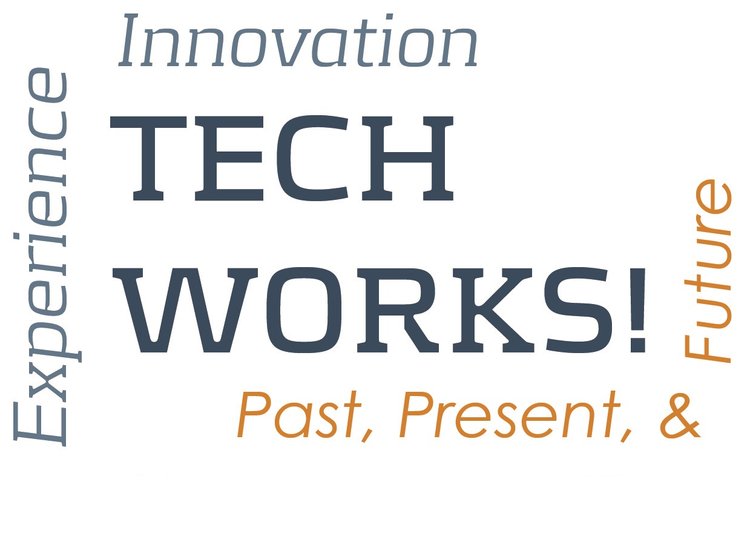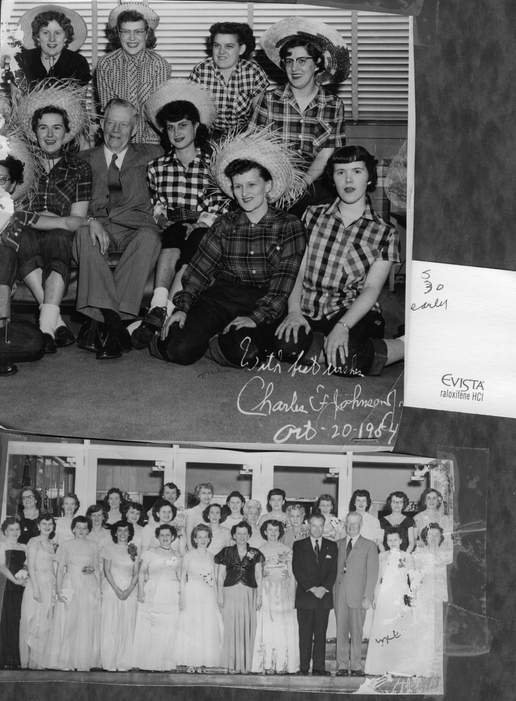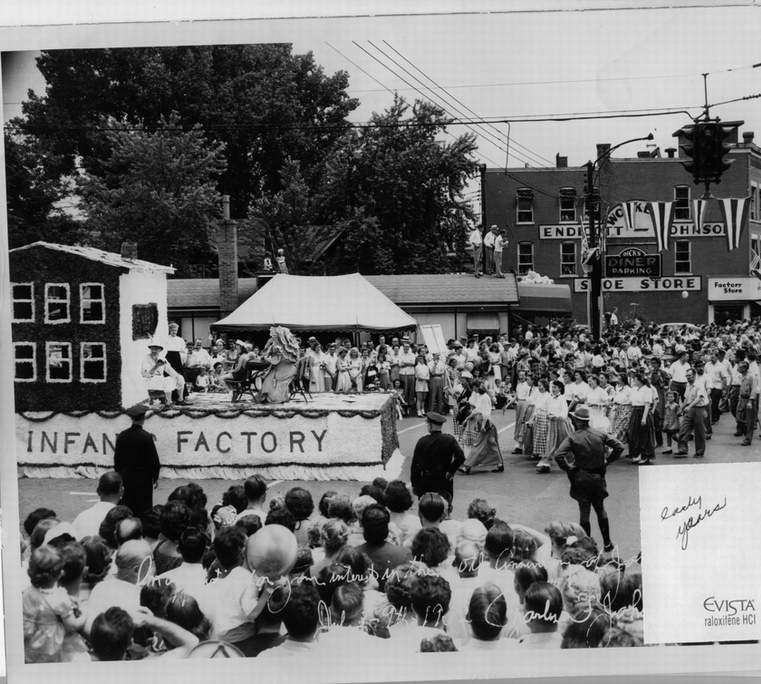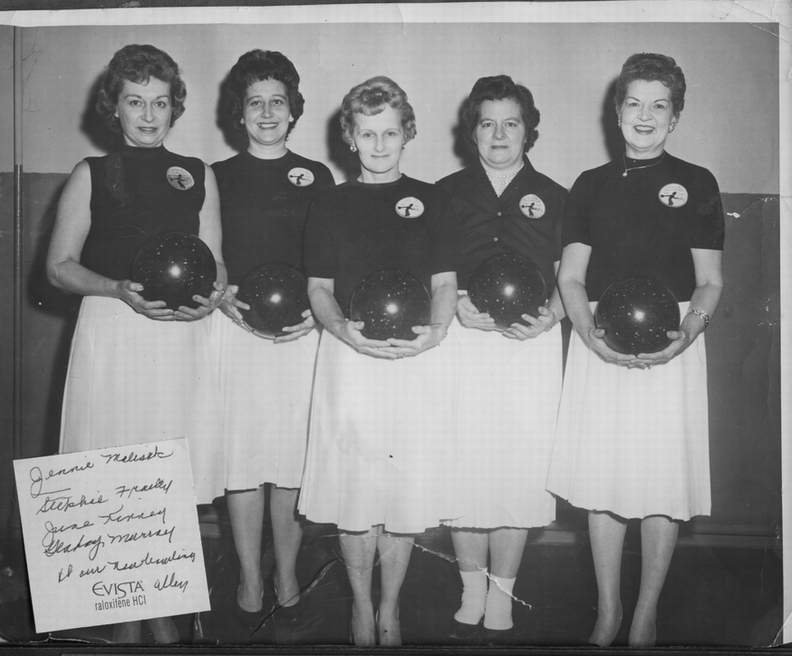History Works! is the oral history recording program of the Center for Technology & Innovation in partnership with
Union Endicott High School (UEHS), Endicott, NY
Binghamton University (BU), Binghamton, NY
Cornell University Landscape Studies Program Landscape Architecture Department, Ithaca, NY
Endicott Visitors Center, Endicott, NY
Four County Library System, Vestal, NY
History Channel - Save Our History program
Johnson City Senior Center, Johnson City, NY
Old Village of Union Historical Society, Endicott, NY
Your Home Public Library, Johnson City, NY
Borrow the CD from a library near you. More stories in print & audio formats at Welcome to TechWorks! page.
The History Works! CD was produced by CT&I with the invaluable aid of Andrea Hammer, Cornell University; Starr Latronica, Four County Library System; and Jonathan Miller, Homeland Productions; who coached the student reporters in the art of gathering and framing stories. Debbie Williams, CT&I, and history teachers Cathy Hayes, JCHS; Nancy Dinaburg, UEHS; Mike Palmitier, UEHS; coordinated the student efforts with savvy and aplomb. Interview venues were graciously provided by Kathy Utter at the Endicott Visit ors Center, Kathy Greenblott at the Johnson City Senior Center; Doris Edwards at the Old Village of Union Historical Society, and Lori Welch at the Partners Trust Bank, Endicott.
The History Works! musical theme is a joint effort of Curt Hoover, JCHS, and Robby Aceto, Ithaca-based composer. Christine Chen and Laura Jurewicz, UEHS, and Mike Vanuga, CT&I, introduce the audio short stories. Post-production assistance was provided by Sam Latronica and Ezra Monasebian, CT&I interns, with advice from Mark Kriebel, Jonathan Miller, Michael Phillips, and Martha Wexler, who lent their expert ears as reviewers.
The History Works! graphics were designed by Elise Caroompas, and Cindy Henry, UEHS, and Mike Ziemba, Independent Consultant. The topo maps are used courtesy of the University of New Hampshire Library Digital Collections Initiative. Marilyn Blake, UEHS, coordinated PR for the project. Guidance over the course of the History Works! project was provided by local media - Elizabeth Cohen, Dave Rossie, Mary Pat Hyland, Mary Haupt, & Valerie Zehl (Press - Sun Bulletin), David Whalen (Time Warner Cable), Don Giovanni (WINR), Bob Joseph & Roger Neel (WNBF), Ken Campbell & Bill Jaker (WSKG).
Tracks
| Track # | Speaker | Story | Duration | Reported by |
|---|---|---|---|---|
| 1 | Laura Jurewicz | Welcome to Endicott & Johnson City | 2:55 | CT&I |
| 2 | Nellie Roth | On the Avenue | 0:51 | CT&I |
| 3 | Floyd Bush | The Clock Doctor | 2:56 | S. H. Kim, Cornell |
| 4 | Frank Petrilli | Frank the Barber | 1:45 | Heather Marciniec, Corrnell |
| 5 | Pat Roberts | White shirts for lepers | 0:46 | Cornell |
| 6 | Jack Caprio | Origin of BC comic strip | 3:53 | Cornell |
| 7 | George Corinno | Opera Cabaret | 4:04 | Cornell |
| 8 | Christine Chen | EJ Corporation | 0:46 | CT&I |
| 9 | Sal Paliziano | EJ factory whistles | 0:46 | Matthew Ball, Cornell |
| 10 | Anita Strong | Finding a better life at EJ | 1:33 | Amelia Stymacks, JCHS |
| 11 | Sandy Scanlon | Remembering George F. | 3:07 | Christine Chen & Laura Jurewicz, UEHS |
| 12 | Helen Klysh | EJ benefits | 0:54 | Ryan Conroy, Jessica Johnson, & Aimee Sosenko, UEHS |
| 13 | Stephanie Frailey | EJ Recreation | 0:47 | CT&I |
| 14 | Joe Nestor, with Alex Alexander, Joe Caldwell, Bill Dennis, & Lou Karedes | En Joie Golf Course | 4:16 | CT&I |
| 15 | Harold McGowan | Spikeless golf shoes | 1:14 | CT&I |
| 16 | Jack Dowd | EJ's final decades | 3:23 | Anthony Watts, UEHS |
| 17 | Helen Klysh | Factories in Johnson City | 0:51 | Ryan Conroy, Jessica Johnson, & Aimee Sosenko, JCHS |
| 18 | Stephanie Frailey | How sneakers are made | 1:16 | Laura Edmund, & Marissa Margosian, BU |
| 19 | Sal Paliziano | Paracord Rubber Factory | 1:22 | Matthew Ball, Cornell |
| 20 | Harold McGowan | EJ rubber footware | 2:05 | CT&I |
| 21 | Ray Liguri | Many steps make a shoe | 7:09 | Jennifer Knotting, Cornell |
| 22 | Irene Bealo | Buckling & lacing shoes | 2:04 | Brianna Page & Srioula Xayavongsone, JCHS |
| 23 | Harold McGowan | Four kinds of buyers | 1:48 | CT&I |
| 24 | Jack Caprio | EJ Songs - Hart & Caprio | 0:55 | Cornell |
| 25 | Laura Jurewicz | Endicott tanneries | 0:33 | CT&I |
| 26 | Sandy Scanlon | Inside an EJ tannery | 1:09 | Christine Chen & Laura Jurewicz, UEHS |
| 27 | Ray Liguri | From hides to leather | 1:03 | Jennifer Knotting, Cornell |
| 28 | Ted Warner | Endicott's dump | 0:34 | Pat Castrenza, Cornell |
| 29 | Jack Caprio | Rafting the marsh | 1:34 | Cornell |
| 30 | Doris Edwards | History of the marsh | 1:24 | Cornell |
| 31 | Christine Chen | IBM Plant # 1 | 2:54 | CT&I |
| 32 | Joe Yurecka & Bill Mitchell | Caroll Press Dept. | 1:14 | Karen Kaminski & Bill Pavlovich, BU |
| 33 | Victor LaStella | IBM Special Wireman | 1:56 | CT&I |
| 34 | Karl Hermann, Stark Roberts, Ray Rinne, & Don Seraphim | Printed Circuits | 4:19 | CT&I |
| 35 | Ray Rinne, Don Seraphim | Research Lab # 1 | 1:34 | CT&I |
| 36 | Harry Lewis | Work practices at IBM | 4:15 | Mike Vanuga, CT&I |
| 37 | Frank Petrilli | IBM strategy | 1:52 | Heather Marciniec, Cornell |
| 38 | Mike Vanuga | Credits | 0:46 | CT&I |












